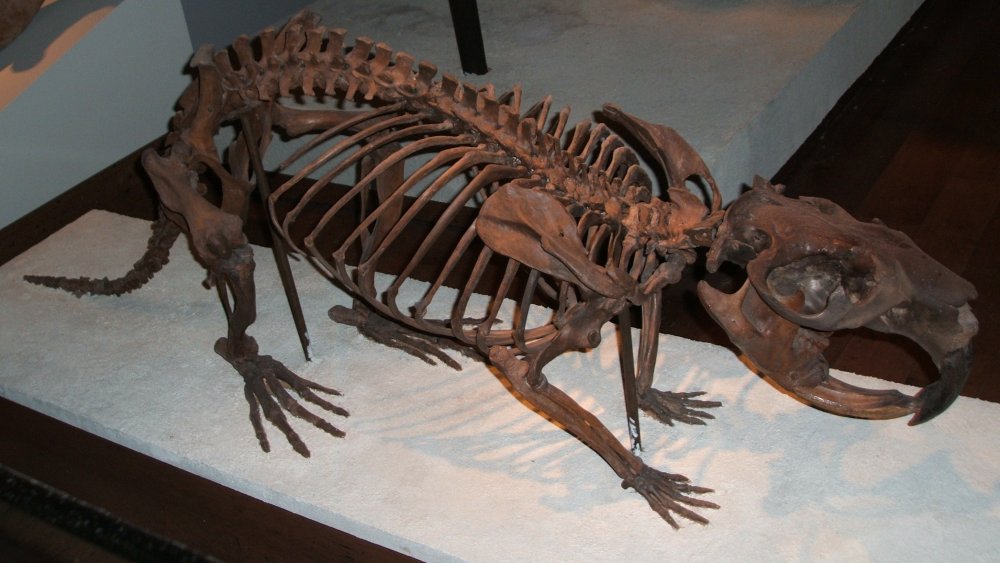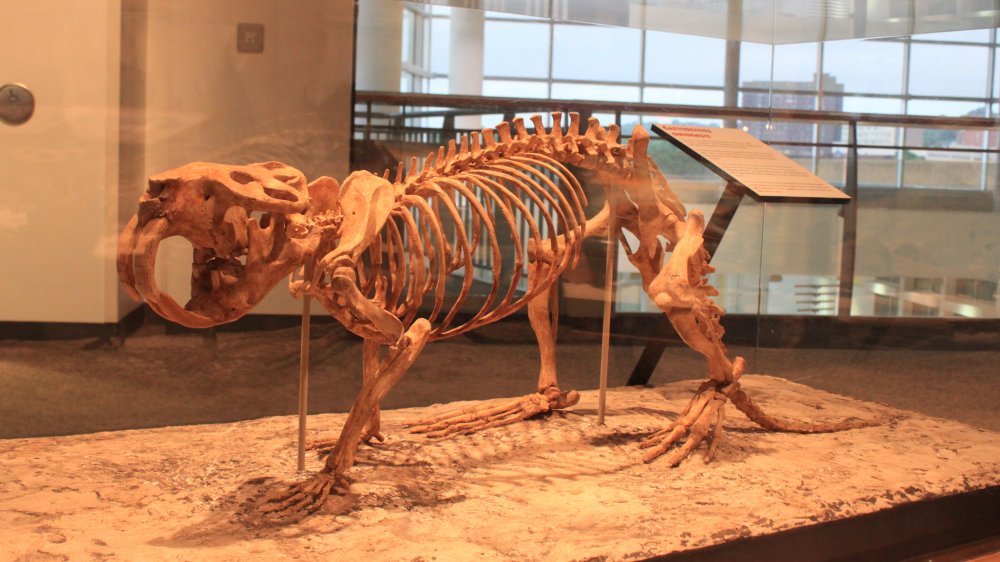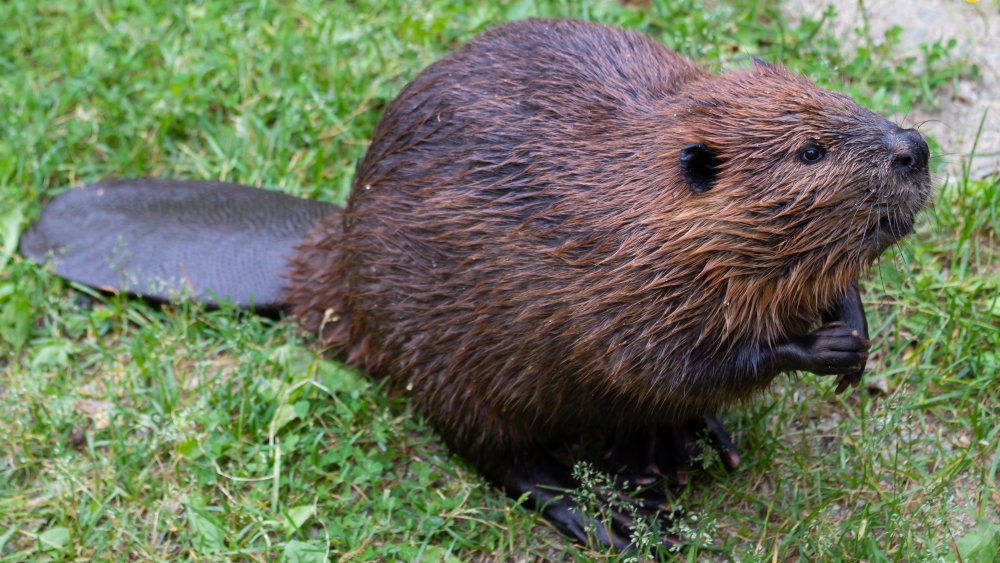The Reason Giant Beavers Went Extinct
When Westley battled a rodent of unusual size (R.O.U.S) in The Princess Bride, he probably had no idea that there once existed a rodent whose usual size was even bigger: the giant beaver. As IFL Science writer Katy Evans explains, "This real-life R.O.U.S was three times the size of a modern beaver." Measuring up to 8 feet long from head to tail and standing at five feet tall on its hind legs, the giant beaver weighed around 220 pounds and sported six-inch incisors. If Westley had clashed with a giant beaver, perhaps his fairy tale would have ended unhappily. But the species went extinct about 10,000 years ago, possibly saving Westley's butt and Buttercup's. Why did the giant beaver die out? Let's find out.
The giant beaver wasn't eager to build dams
Giant beavers and coexisted with the smaller, tree-chomping, dam-building beavers that we know and love. But despite some superficial similarities, the two species exhibited stark differences. According to the Illinois State Museum, the giant beaver's giant incisors "were tapered to blunt, rounded points, rather than wide sharp edges." And their cheek teeth resembled those of the capybara. As a result, they weren't well-suited for chewing through trees like modern beavers.
Giant beavers had small, smooth brains compared to the wrinkly brained modern beaver, so those behemoths probably lacked the mental capacity to build complex dams. Moreover, ThoughtCo notes that the animal's massive frame would have made it rather unwieldy on land and vulnerable to attacks from saber-toothed tigers. Preferring a wet life to a dry death, giant beavers tended to spend their time in aquatic environments. Unfortunately, these traits would be the giant beaver's undoing.
Giant beavers melted away with the Ice Age
Per the Illinois State Museum, giant beavers thrived in lakes and ponds located near swamps (perhaps even the fire swamp that Westley and Buttercup braved). But the end of the Ice Age may have shortened the growing season for certain aquatic plants. This would have posed a giant problem for giant beavers, which liked to pack on fat for the winter by gorging on those underwater plants.
Meanwhile the smaller dam-building beavers were better able to cope in warmer conditions. As researcher Fred Longstaffe put it, "The ability to build dams and lodges may have actually given beavers a competitive advantage over giant beavers because it could alter the landscape to create suitable wetland habitat where required. Giant beavers couldn't do this." And so they couldn't survive.


